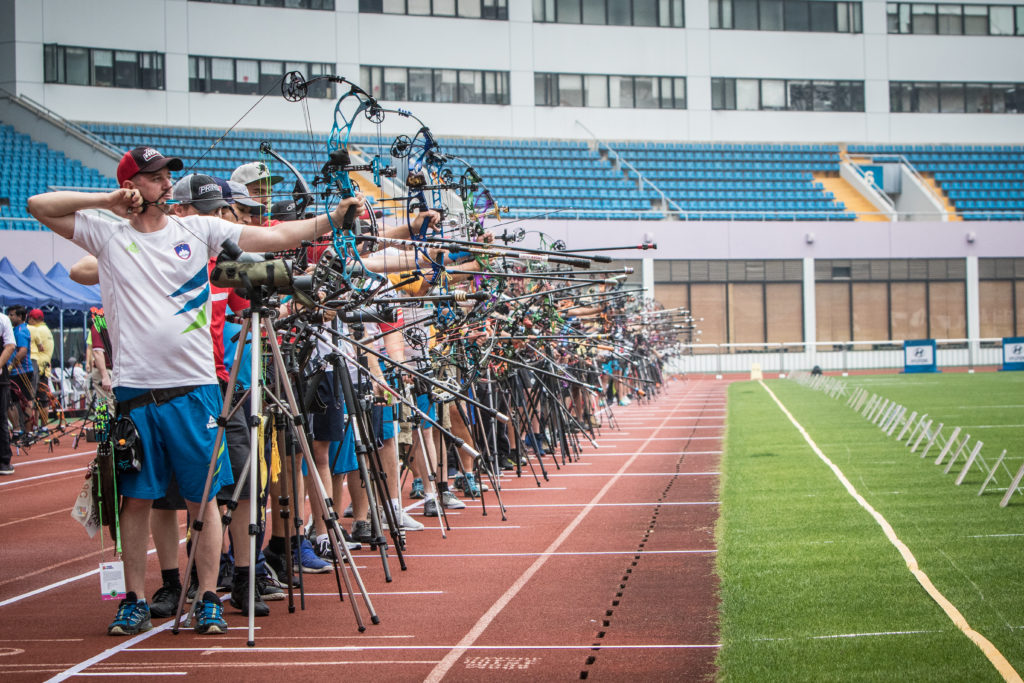By Dr James Park
I have often heard it said that “the ranking round is not important; it is the matches that matter”. Usually, these comments come from archers who did not rank very high but think they might be good at matches. But do they represent reality?
Certainly, we do see some archers who are ranked down the list win medals. A recent example was compounder Mohan Bhardwaj, who ranked 42nd after qualification at the World Cup in Korea in 2022. He then went on to win the silver medal, losing only to Mike Schloesser in the gold final. Other examples are easy to find and I have often had people point to such examples as proof that ranking does not matter.
A handful of high-performing archers specifically prefer matchplay to qualification, Australia’s Taylor Worth among them. As he told World Archery in 2018, “I think of myself as a matchplay specialist, my ranking rounds have never been the strongest, but I can do it when it matters head-to-head.”
In matters such as these it is always useful to have a look at the data. I have done that in several ways. I analysed ranking round scores and match scores for about 130 top archers for all major international events during the period 2016 to 2018 (see Reference 1). While I considered all four categories (men/women, compound/recurve), my published paper only included the analysis for men’s recurve.
Nevertheless, the results for all four categories were the same: the top archers shoot at very close to the same level in ranking rounds and matches. There were very few exceptions. At the lower levels that might not be the case – less capable archers might get more nervous in matches, for example. However, if we are interested in the archers who are medal hopes, it is to the top archers we need to look, not those down the list.
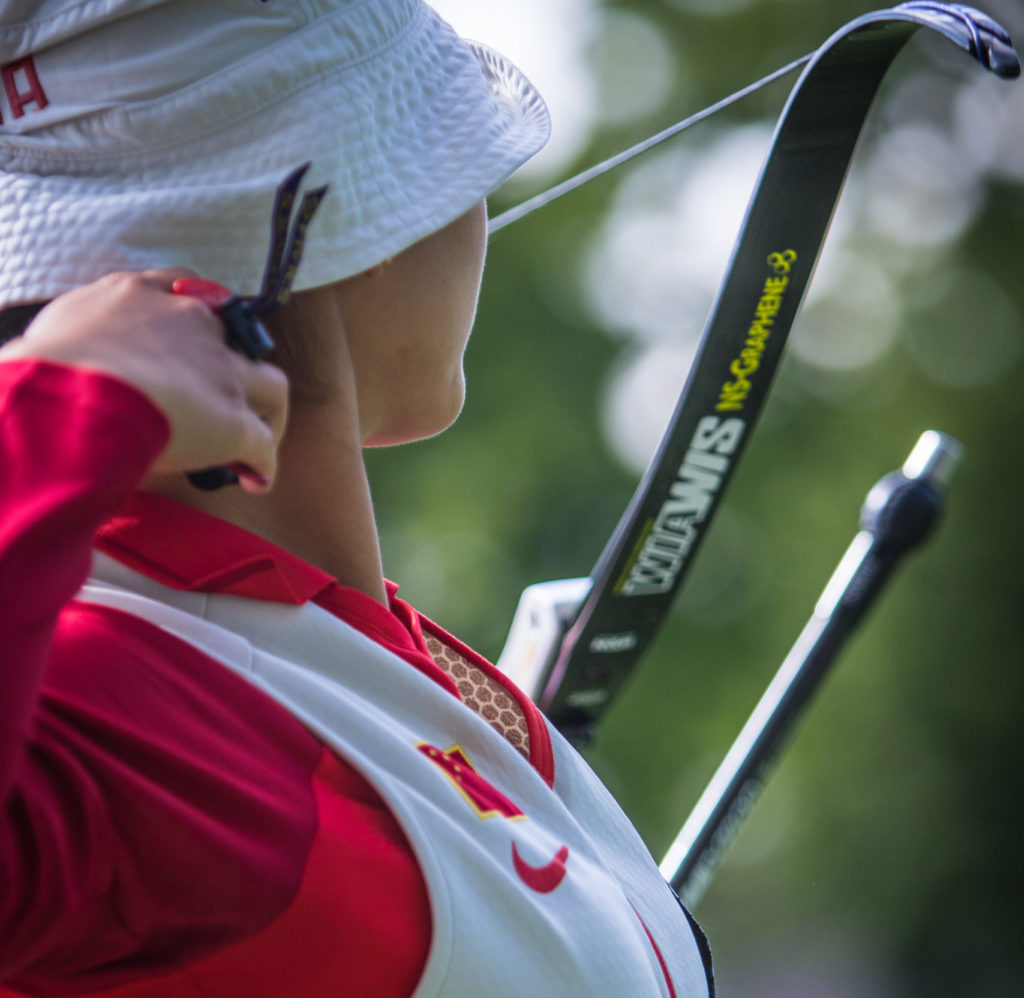
In a second study (Reference 2), I looked at the probability of winning a medal in relation to the archer’s ranking position. I considered every major international event for the period 2010 to 2017 and again analysed all four categories. I assumed that archers shot at the same level in ranking and in matches and used that to calculate the probabilities of each archer winning a match.
Then, considering every possible combination of matches an archer can have en route to the finals, the probability of the archer winning a medal can be obtained. I compared the calculated probabilities with the actual probabilities over 2010 to 2017: the match between the mathematics and reality was excellent.
This showed that archers who ranked higher had a markedly higher probability of winning a medal. Again, it is possible for an archer who ranks down the list to win a medal, but the probability is quite low.
Interestingly, the top-ranked couple of archers often score markedly higher than others. To win a medal, the 8th, 9th, 16th, 17th, 32nd and 33rd archers must beat the top-ranked archer in a match prior to getting to the medal matches. This leads to the archers who rank in those positions having a lower probability of winning a medal than those archers who rank nearby. It shows in both the mathematics and in the actual probabilities.
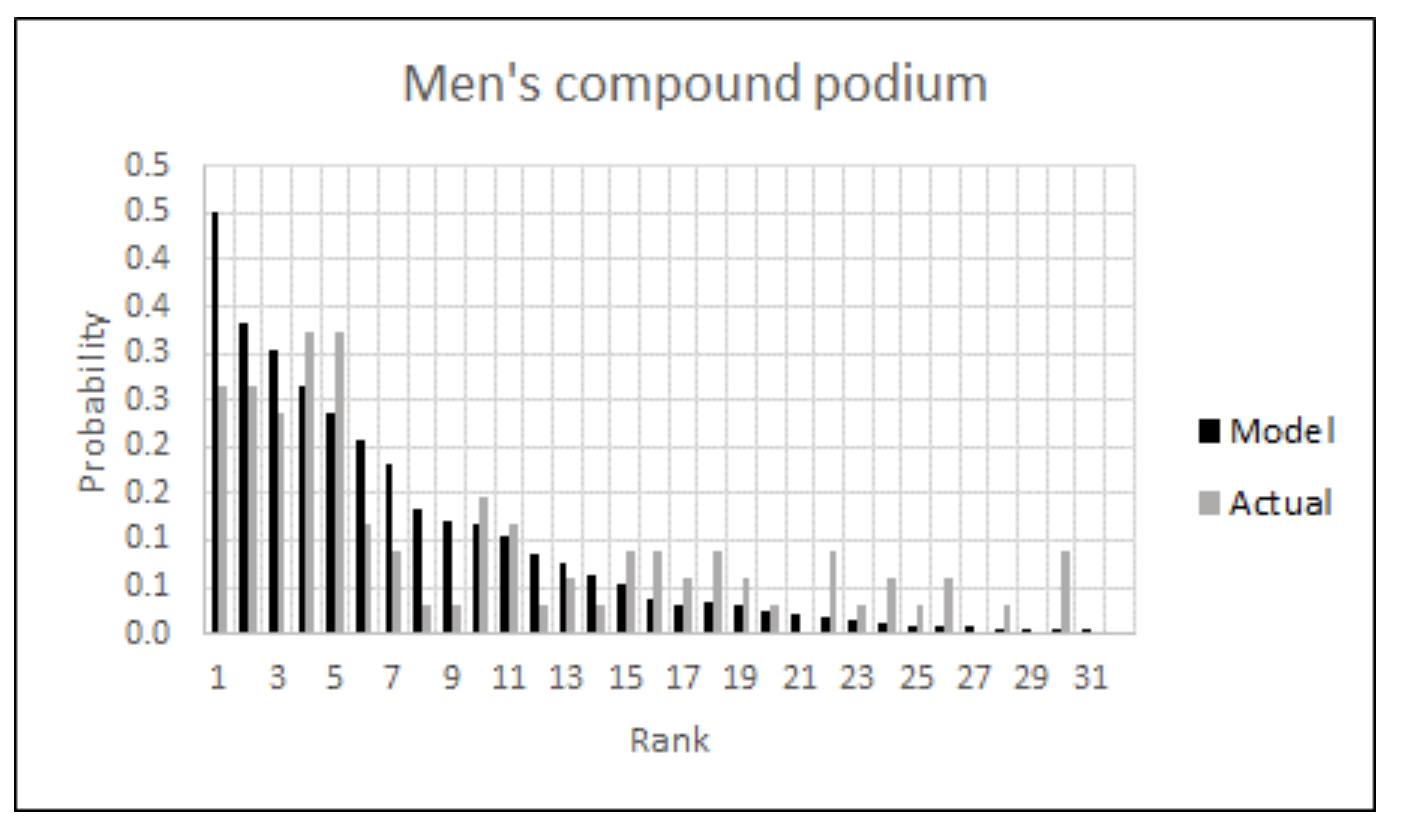
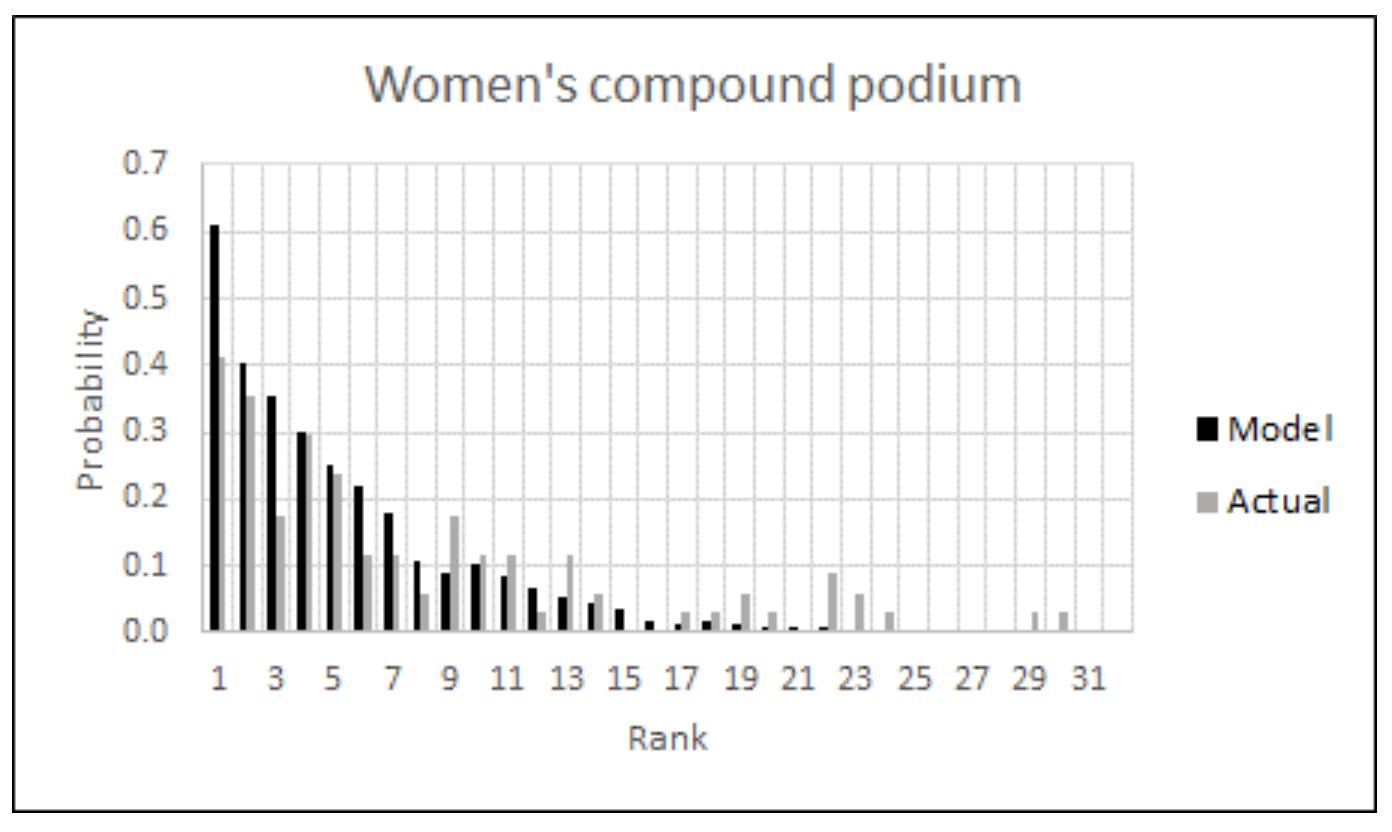
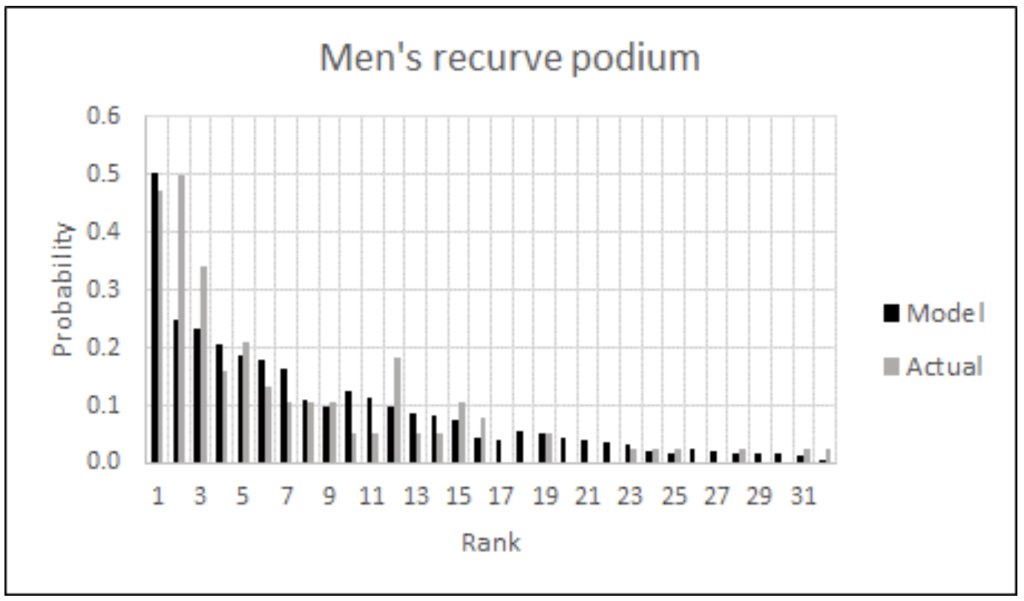
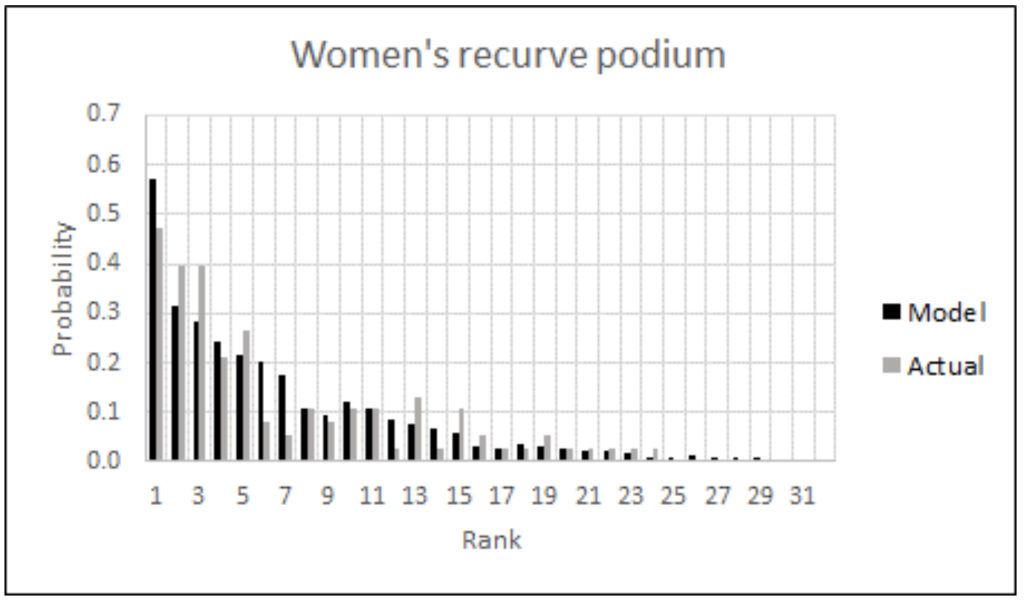
I have found a very good indicator is the number of archers who rank in the top 8 (or 4) and who then remain in the top 8 (or 4) after the matches. If we assume that the top 8 ranked archers survive any early matches and all make it into the top 32, we can consider the probability of them then surviving through to the top 8 after matches. If the ranking position did not matter, on average one quarter of them should survive. That is, the average number of survivors should be 2 out of 8. For the top 4, if the ranking position does not matter, 0.5 of them should survive through to the top 4 after the matches. Reality is very different to that.
The following charts show the actual data for major international events during 2018 to 2022.
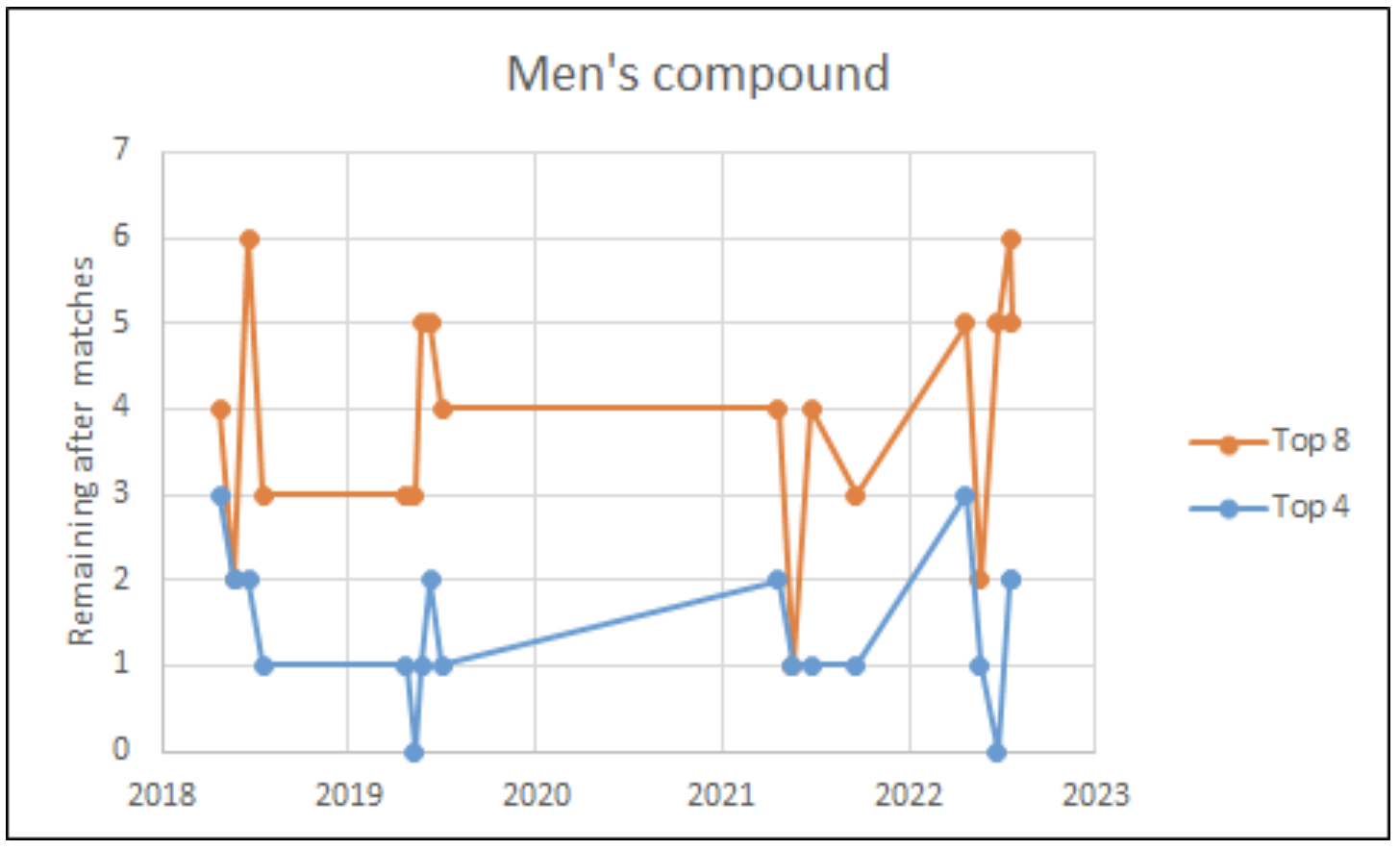
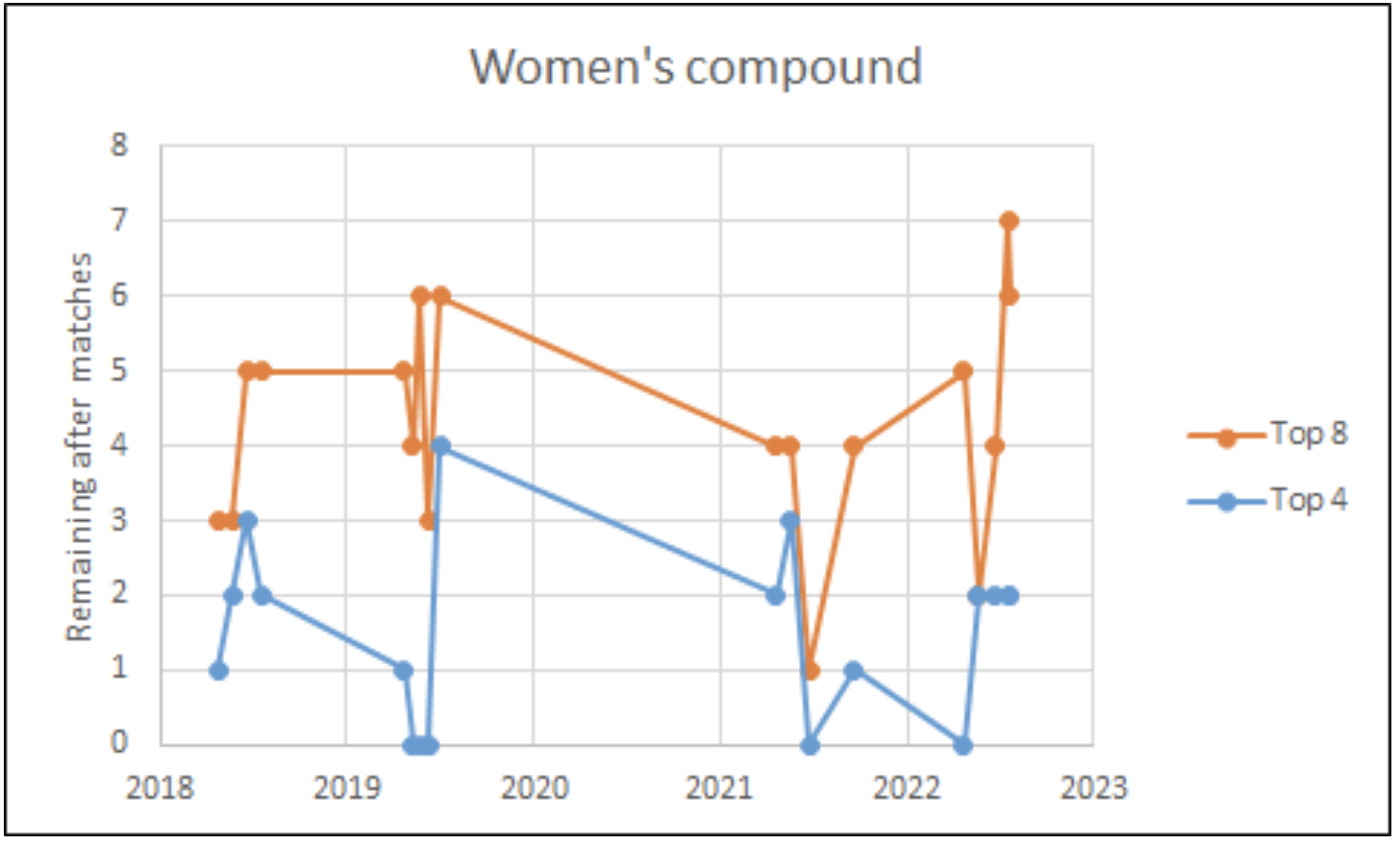
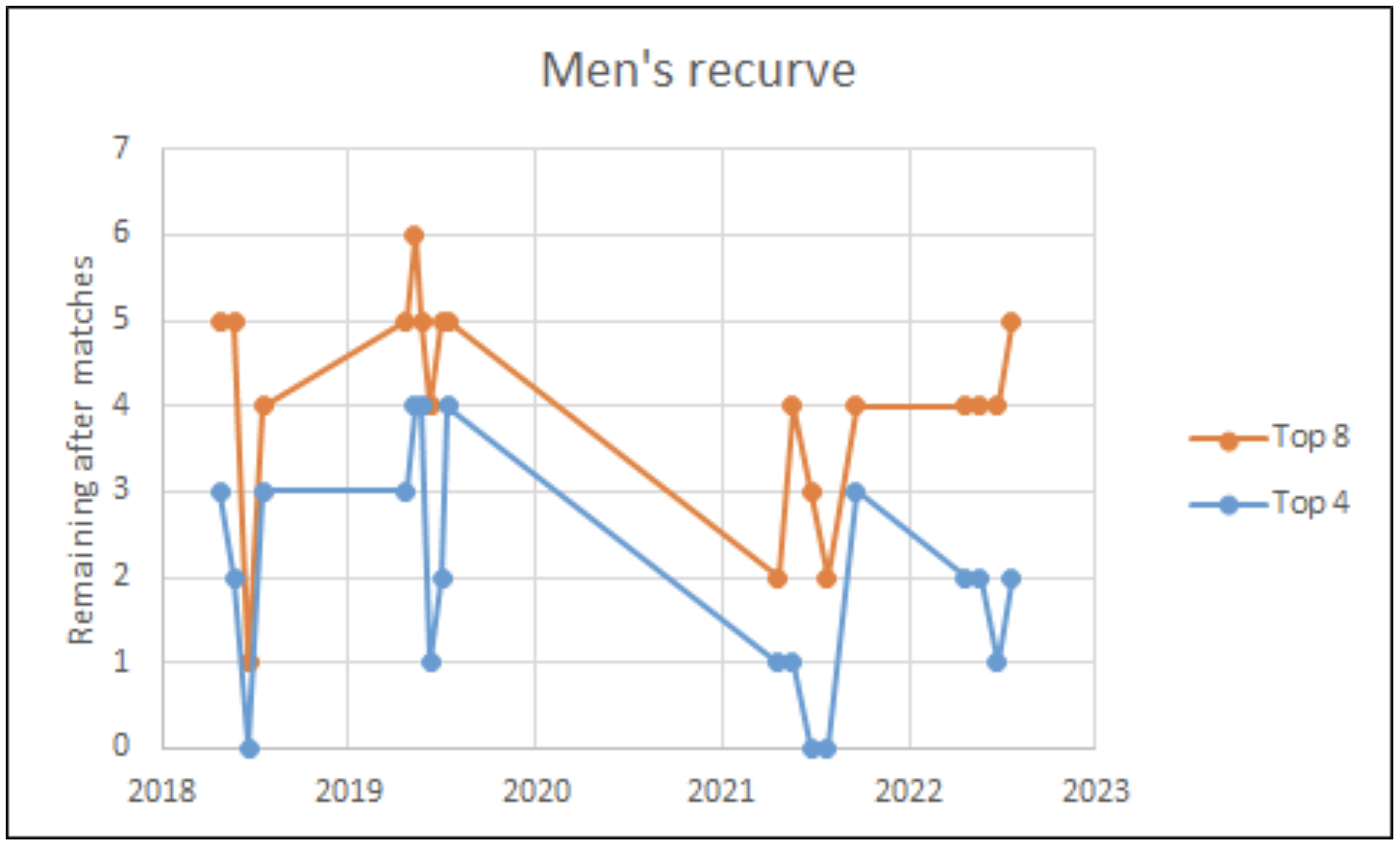
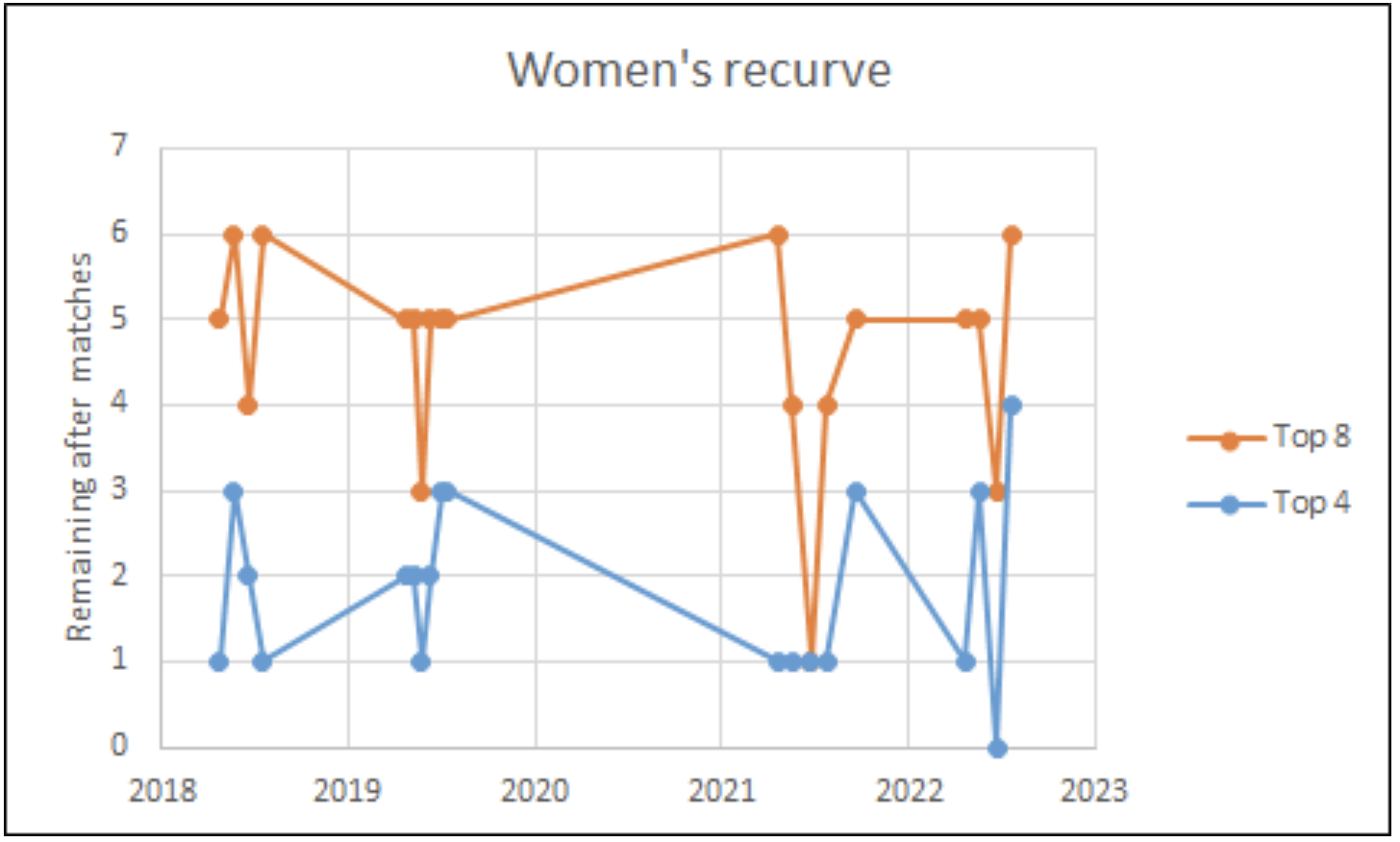
Interestingly, if we include international events for the period 2016 through to 2022, the average values barely change. It is obvious that the averages are markedly different to those expected if ranking does not matter.
So, what can we conclude from the actual data (and the analysis)? First, an archer’s ranking round position matters a lot! It provides a very good indicator of the probability of the archer winning a medal. Ranking higher gives the archer a very much better chance of winning a medal.
Of course, an archer can win from a low-ranking position, the probabilities are not zero, but are much lower. There are some obvious implications for team selection!
| Division | Top 8 if ranking does not matter | Average from the real data | Top 4 if ranking does not matter | Average from the real data |
| Compound men | 2.0 | 3.9 | 0.5 | 1.4 |
| Compound women | 2.0 | 4.3 | 0.5 | 1.5 |
| Recurve men | 2.0 | 4.1 | 0.5 | 1.7 |
| Recurve women | 2.0 | 4.6 | 0.5 | 1.8 |
Average number of archers remaining after the matches
References
1. Park, J.L., The relative performance levels of archers in ranking rounds and matches, Proc IMechE Part P: J Sports Engineering and Technology, 2021, Vol 235(1), 29-35, DOI: 10.1177/1754337120960650
2. Park, J.L., Individual and team performance levels at major international target archery competitions, 2010-2017, Proc IMechE Part P: J Sports Engineering and Technology, 2018,
Vol 233(2), DOI: 10.1177/1754337118816917


